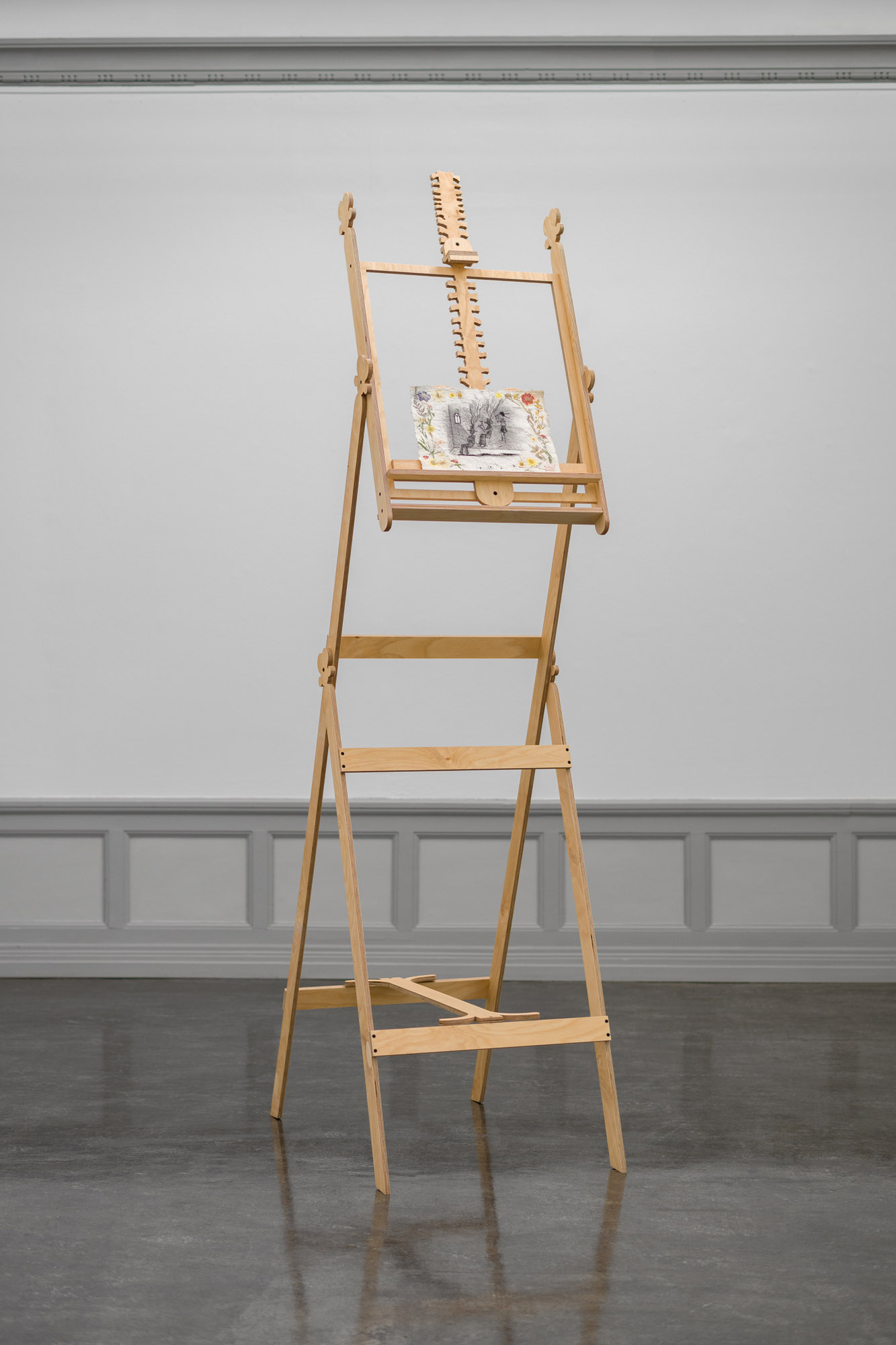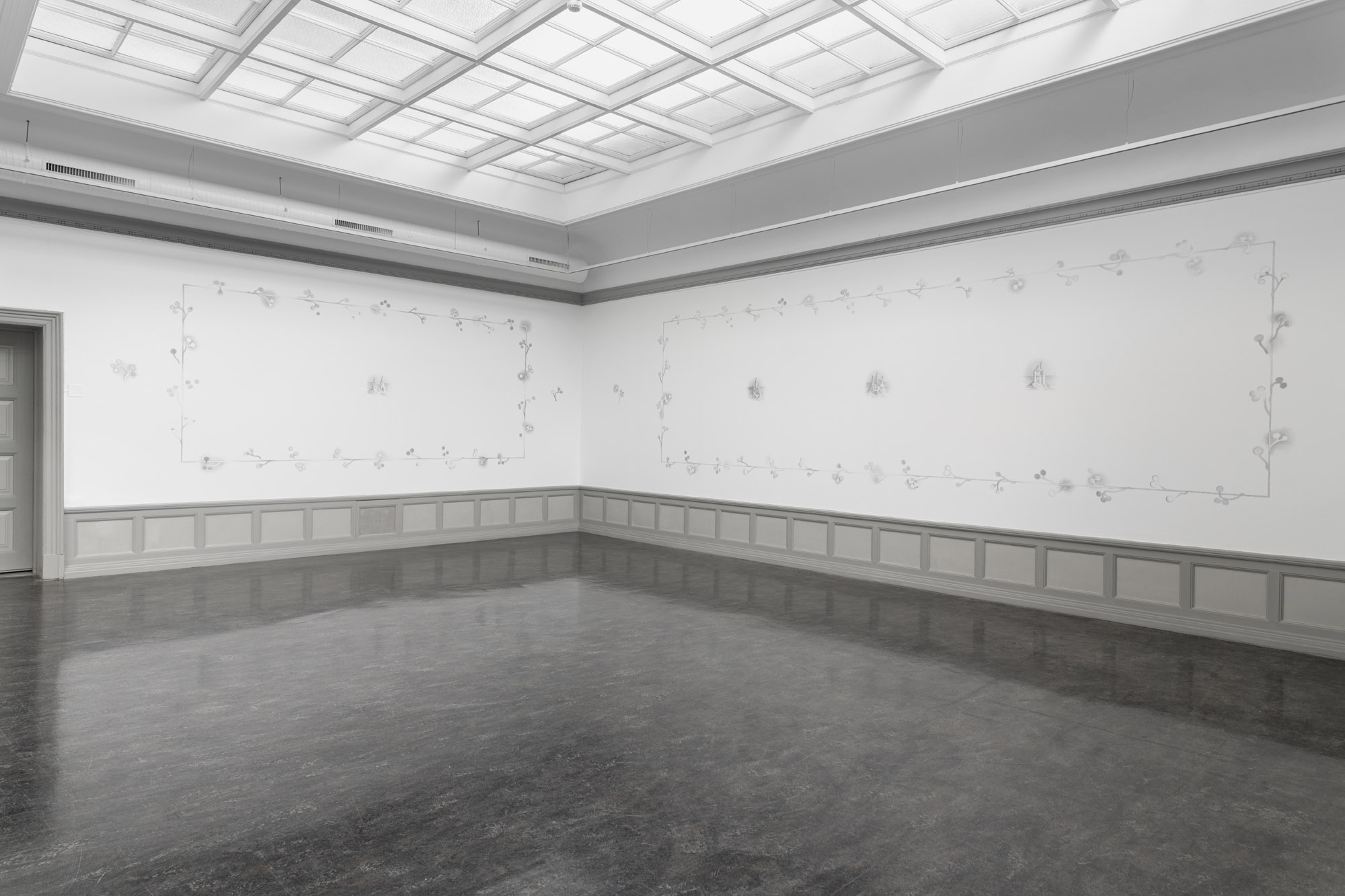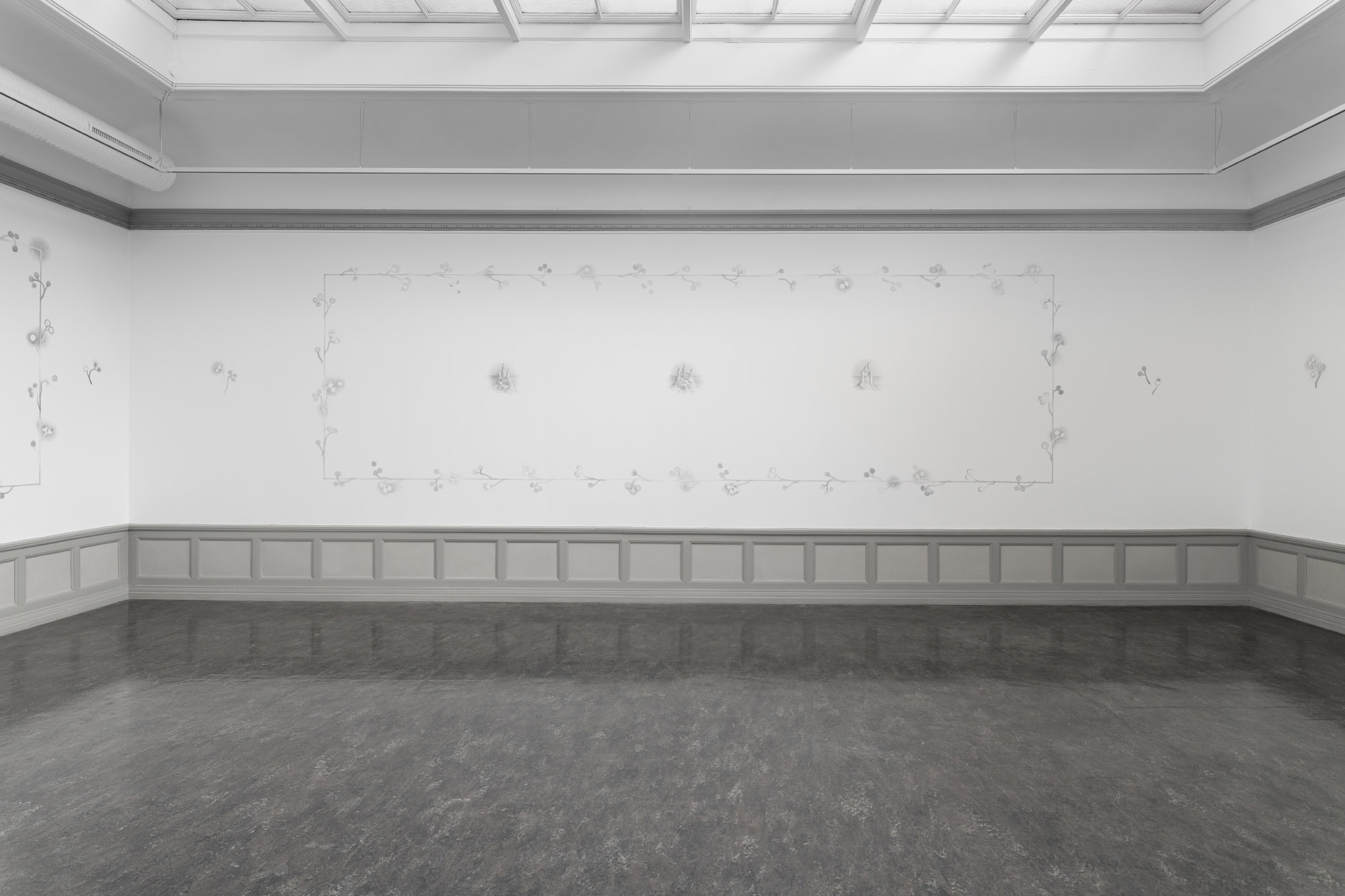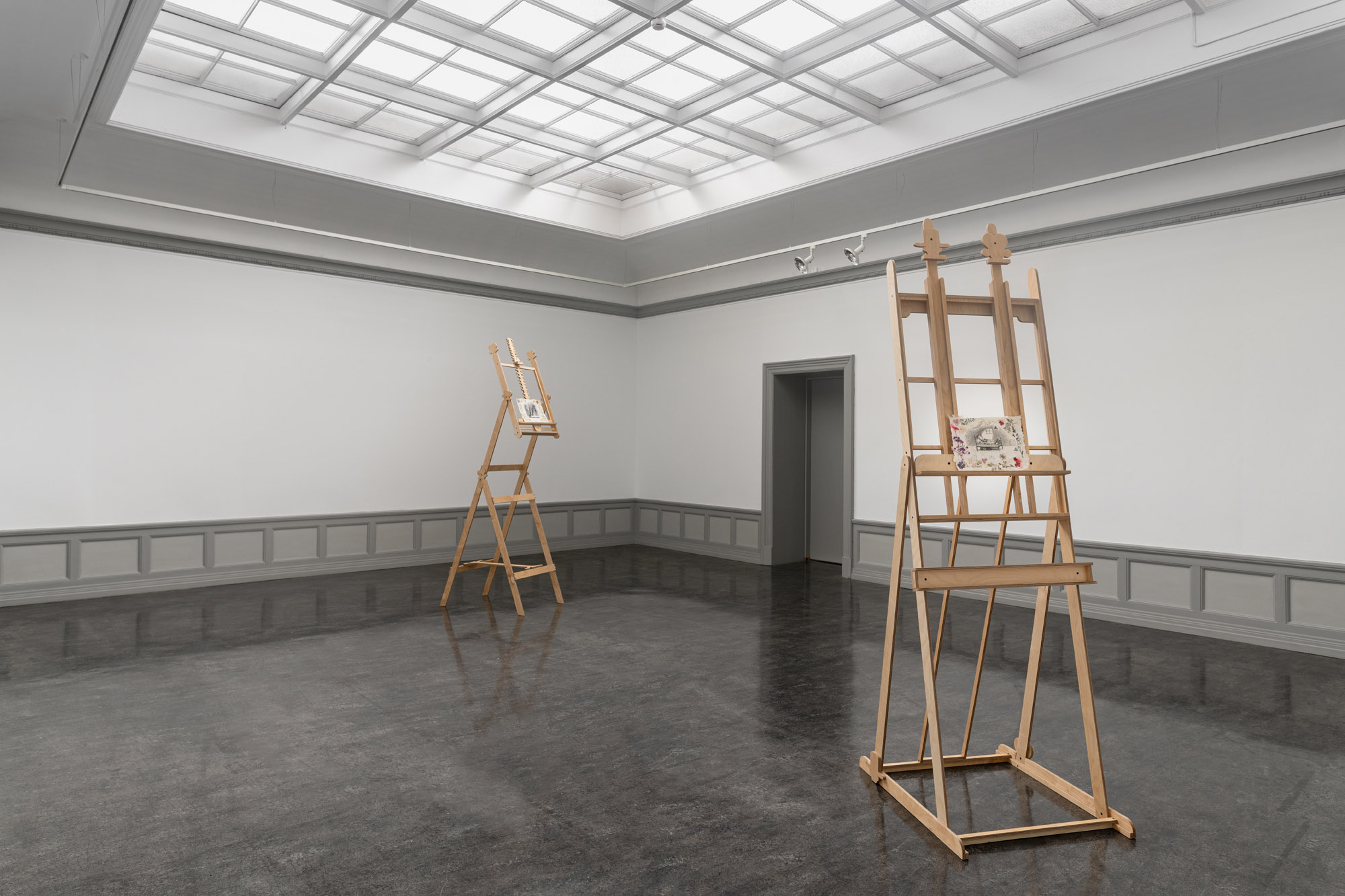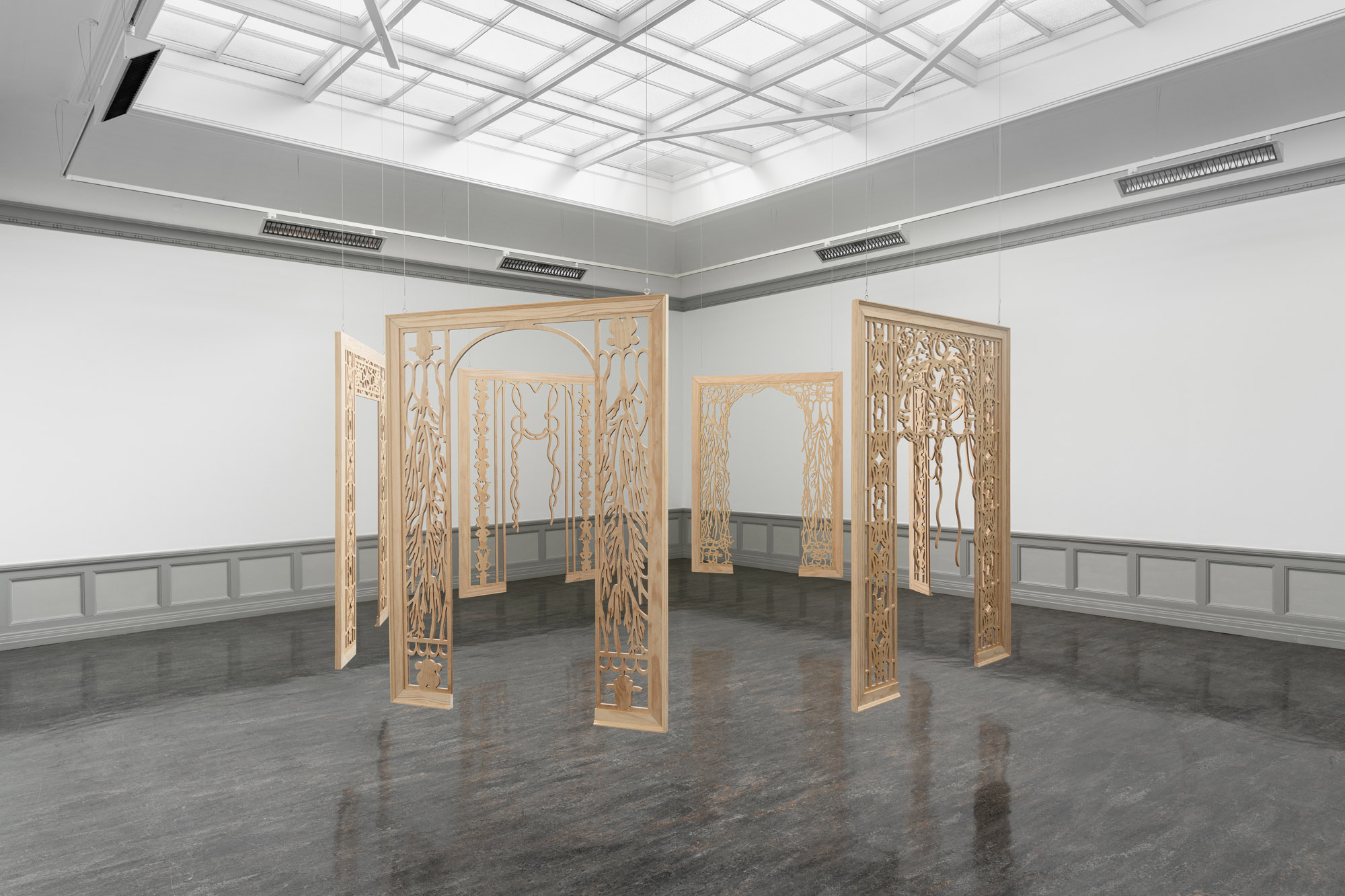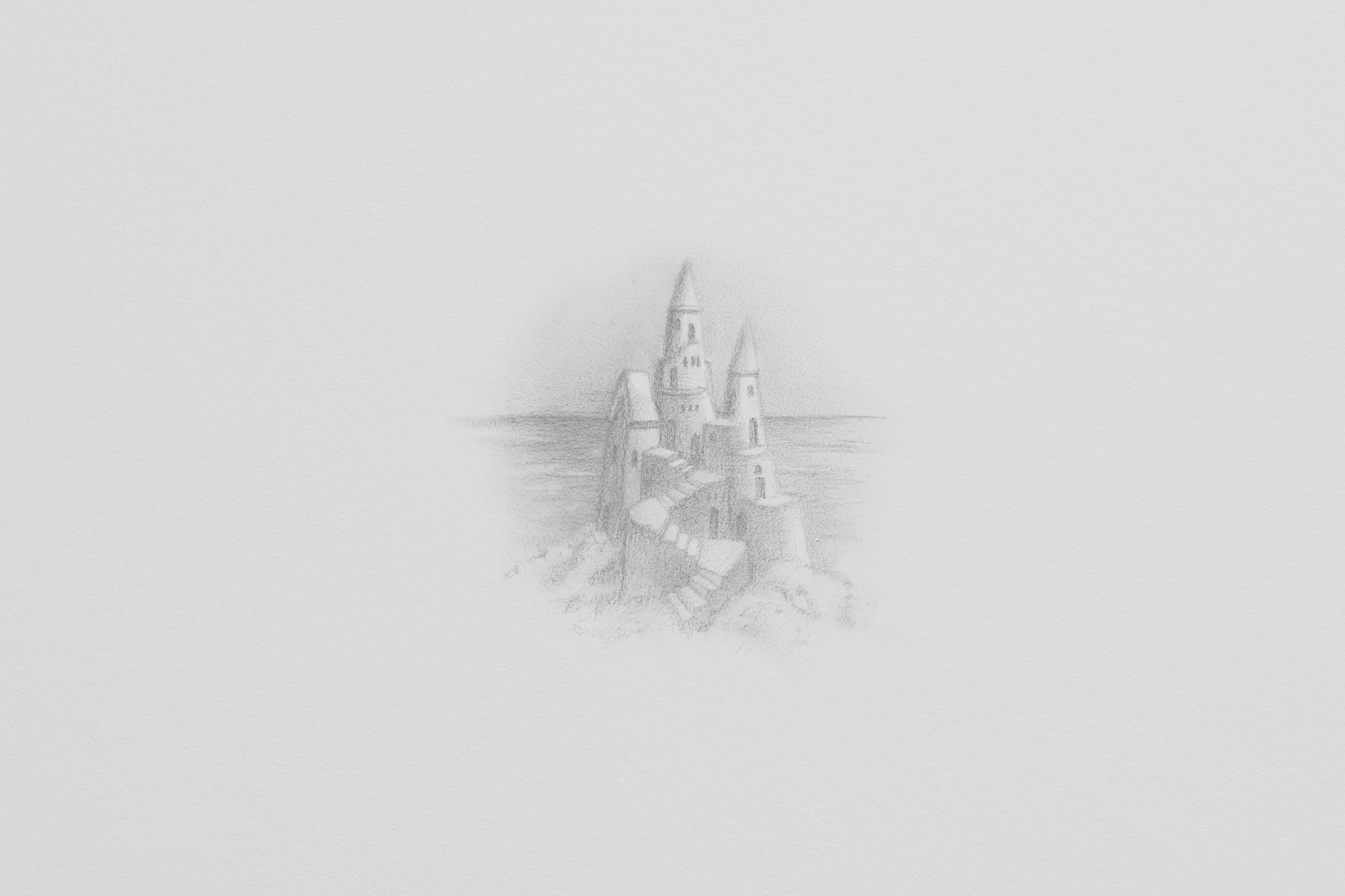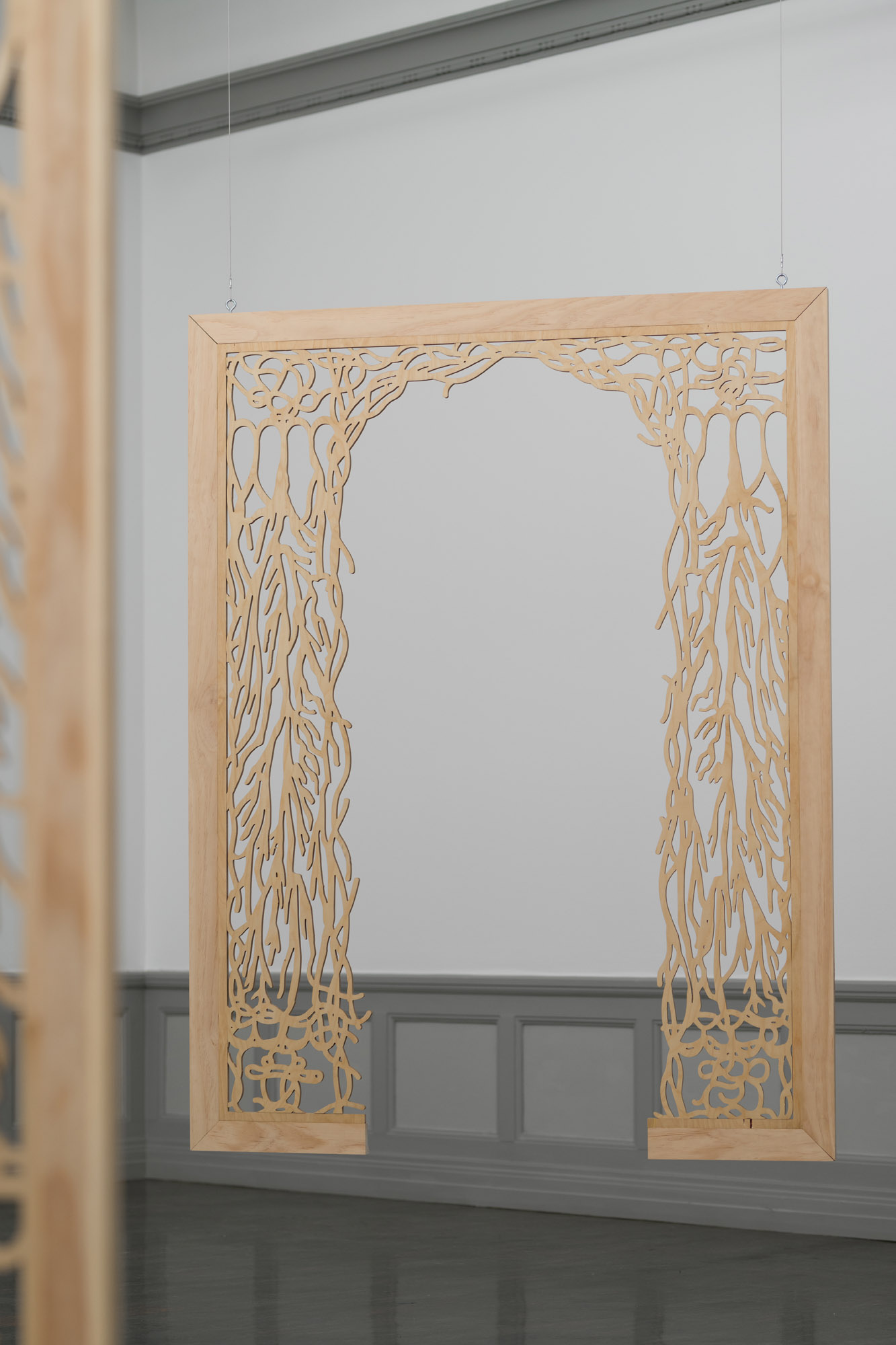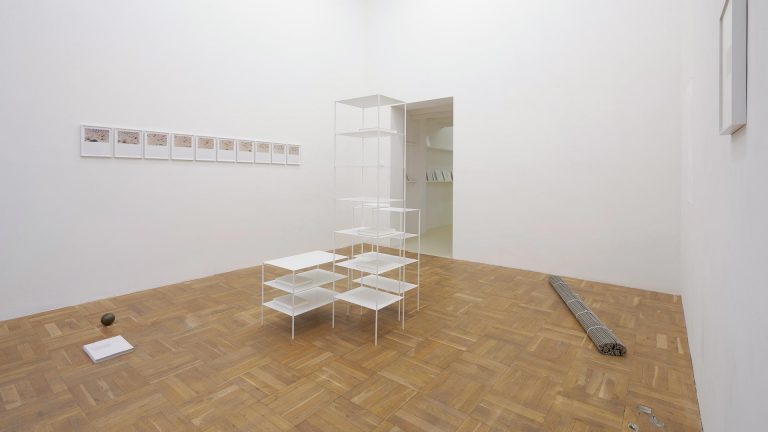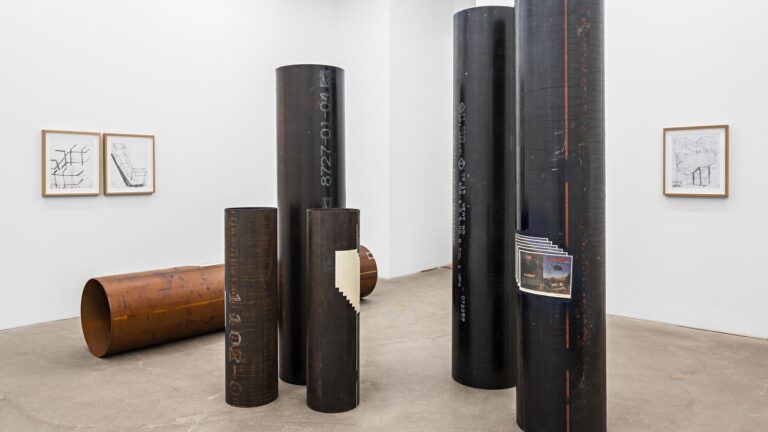Artist: Cindy Ji Hye Kim
Exhibition title: Sand in the Hourglass
Curated by: Kristina Ketola Bore
Venue: Kunsthall Stavanger, Stavanger, Norway
Date: October 6, 2022 – January 15, 2023
Photography: all images copyright and courtesy of the artist and Kunsthall Stavanger
Kunsthall Stavanger is delighted to present the first institutional exhibition in Europe of Cindy Ji Hye Kim (b. 1990, Incheon, South Korea). The exhibition, which includes several new works, comprises paintings, sculptures, works on paper, and a site-specific mural.
In her practice, Kim explores memories and the fabrication of personal narratives through image-making. Kim’s recurring motifs and forms become a story in itself, as the symbols that sanctify moments of life are reimagined and repeated throughout her drawings, paintings, and sculptures. Ultimately, Kim seems to question what it means to contend with longing and nostalgia, in the process of making sense of our own narrative and history of where we belong.
The forms and symbols encountered in Kim’s works are recognisable, yet the stories they tell can be hazy and ungraspable. Her ongoing use of a grisaille palette, which the artist sees as the primal and hidden layer of an image, transforms the act of drawing into a tool for outlining the world of the unconscious. The works explore duality; the parent and the child, dreamscapes with nightmares towering in the shadows, the gateway without a beginning or an end. There is an endless balancing between poles in Kim’s works, while the answer to the quest the artist puts us on remains elusive. The body of works included in the exhibition stand still, yet vibrates with continuous movement.
Kim’s interest in the anatomy of images is apparent in the site-specific mural, Antechamber (2022) which takes over gallery 4. The galleries in which Kim’s exhibition is on view have been kept true to their original architecture from 1925. Sat in a symmetric design and mirroring each other, the galleries create an infinite loop in themselves. In Antechamber, Kim carries through this motion, repeating the same form until the loop of the galleries and the wainscotting seem to dissolve into the work. The repetition points to the reliving of memories and how the recurring of dreams create new narratives. Through this gesture the individual psychic space is manifested directly into the kunsthall’s interior architectural space.
Keeping with the site-specificity, the mural is naturally lit, and as such the experience of the work will change depending on the weather and time of day. When the days creep towards the darkest time of year, the mural will be softly lit to allow visitors to experience the details in the work. The outlines of the sandcastles depicted in the work fades into the walls, creating a parallel in both the motif and the artistic method to the passing of time.
In Gallery 5 two easels are presented, their towering presence contrasting the delicate drawings they hold. For Kim, the easel symbolises the artist’s tool of creation, a stage where conscious and unconscious states are performed. In the drawing that is part of the work Assinus IV: Sand in the Hourglass (2022), two people hold flowers while lying on a bed, a child hiding beneath them. They are surrounded by clock parts showing different variations of non-existing times. The pulp of the paper is made up of the artist’s hair and flowers found between her home and studio. For Kim, this is a way to breathe life into the drawing. The inclusion of organic matter and a part of her own body acts as a way to create a bridge between the ‘real’ world and the artist’s reenactment of dreams and her own memories.
The shapes of the spine and pelvis are recurrent throughout the exhibition, the latter a form Kim has depicted on several occasions in reference to the enclosed space of the womb. We also encounter the imagery of the Father, the Mother and the child – prototypes of a life lived. In the work Asinus II: Forgiveness (2022) we also find the child, a form Kim describes as a symbol of her own inner child, trying to re-learn and re-parent her adult self.
A series of six sculptures in the shapes of gateways or arches, are suspended from the ceiling in gallery 3. One of the works, Tribute to Janus: Patterns and Wounds (2022), points to Kim’s influence by the legend of the Roman god of beginnings and endings. In Kim’s work, Janus becomes a centre for reflection, evoking the circular motion of existence itself. Believed to be the guardian of gateways, of time, duality and transitions, his influence on the arches make them act as depictions of passageways between the conscious and the unconscious, mirroring Kim’s interest in the uncharted parts of our psyche.
In the adjoining gallery 2, we encounter a selection of the artist’s ongoing series, Phenakistoscope (2019 –), here represented by four circular paintings. The title refers to the first widespread animation device that created a fluent illusion of motion as a disc rotated in front of a mirror. The paintings are described by Kim as broken clocks, offering a sense of movement and narrative, yet the clocks have no hour hand and as such are not able to participate in real time.
In the work Apology (2022) a figure is running while petals fly from a bouquet of flowers. Time seems to move, yet there is no beginning nor end. The flowers are suspended in the air as if frozen in time. In Nightwind (2022), a child sits on their father’s back. While eliciting an idyllic family scene, the work speaks of authority and the circle of life.

